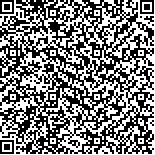| Quote
: |
陈彦灵, 蔡昱哲, 刘艺璇, 罗政, 雷芳, 邓奕辉.从“补虚泻实,燮理阴阳”探讨中药靶向线粒体稳态改善糖尿病合并脑梗死的机制[J].湖南中医药大学学报英文版,2024,44(10):1921-1929.[Click to copy
] |
|
| |
|
|
| This paper
:Browser 201times Download 179times |
| 从“补虚泻实,燮理阴阳”探讨中药靶向线粒体稳态改善糖尿病合并脑梗死的机制 |
| 陈彦灵,蔡昱哲,刘艺璇,罗政,雷芳,邓奕辉 |
| (湖南中医药大学中西医结合学院, 湖南 长沙 410208;湖南中医药大学中西医结合心脑疾病防治湖南省重点实验室, 湖南 长沙 410208;湖南中医药大学中医学院, 湖南 长沙 410208) |
| 摘要: |
| 糖尿病合并脑梗死是糖尿病严重血管并发症,线粒体可能是糖尿病合并脑梗死的治疗新靶点。线粒体稳态与中医“气血阴阳”密切相关。线粒体是细胞“动力工厂”,为人体生命活动提供能量,与中医学“气血”功能具有相似性。线粒体动力学包括分裂、融合和自噬,其对立制约、互根互用、动态平衡的特点是中医学“阴阳”理论微观化的体现。脑为髓海,是元神之府,是新陈代谢的主要调节者,线粒体为大脑供能,并调节人体胰岛素分泌。线粒体稳态失衡与“消渴病中风”病机相符合,消渴日久,气阴亏虚,人体线粒体能量代谢不足;瘀毒阻于脑络,缺血侧脑组织细胞存在受损线粒体和离子潴留等病理产物的堆积,人体气血阴阳失调,虚实夹杂,线粒体稳态失衡。宜以“补虚泻实,燮理阴阳”为基本治则,滋阴益气、活血解毒、改善线粒体稳态。益气活血类中药单体及复方可靶向线粒体质量控制,维护线粒体稳态,改善糖尿病合并脑梗死。 |
| 关键词: 糖尿病合并脑梗死 补虚泻实 燮理阴阳 中医理论 线粒体稳态 |
| DOI:10.3969/j.issn.1674-070X.2024.10.029 |
| Received:April 02, 2024 |
| 基金项目:湖南省科技创新团队(2020RC4050);湖南省中医药科研计划项目(E2022010);湖南省研究生科研创新项目(CX20240750)。 |
|
| The mechanism of Chinese medicine targeting mitochondrial homeostasis to improve diabetes mellitus complicated with cerebral infarction from "tonifying deficiency and reducing excess, harmonizing yin and yang" |
| CHEN Yanling, CAI Yuzhe, LIU Yixuan, LUO Zheng, LEI Fang, DENG Yihui |
| (School of Integrated Chinese and Western Medicine, Hunan University of Chinese Medicine, Changsha, Hunan 410208, China;Key Laboratory of Hunan Province for Integrated Chinese and Western Medicine on Prevention and Treatment of Cardio-cerebral Diseases, Hunan University of Chinese Medicine, Changsha, Hunan 410208, China;School of Chinese Medicine, Hunan University of Chinese Medicine, Changsha, Hunan 410208, China) |
| Abstract: |
| Diabetes mellitus complicated with cerebral infarction is a serious vascular complication of diabetes mellitus, and mitochondria may represent a new therapeutic target for diabetes mellitus complicated with cerebral infarction. Mitochondrial homeostasis is closely related to "qi, blood, yin, and yang" in Chinese medicine. Mitochondria, the "power factory" of cells, provides energy for human life activities, which is similar to the function of "qi and blood" in TCM. Mitochondrial dynamics include division, fusion, and autophagy, characterized by opposition and mutual constraint, interdependence, and dynamic balance, which are the microscopic embodiment of yin yang theory in TCM. The brain, the sea of marrow and the house of the original spirit, serves as the primary regulator of metabolism. Mitochondria powers the brain and regulates the body's insulin secretion. Imbalance of mitochondrial homeostasis is consistent with the pathogenesis of "wasting and thirst disease with stroke", where prolonged wasting and thirst lead to deficiency of both qi and yin as well as insufficient energy metabolism of mitochondria in the human body; meanwhile, stasis and toxin obstructing the brain collaterals result in accumulation of pathological products, including damaged mitochondria and ionic retention in the ischemic brain cells. This, in turn, leads to disharmony of qi, blood, yin, and yang, with combined deficiency and excess, and further imbalance of mitochondria homeostasis. The fundamental therapeutic principle should be "tonifying deficiency and reducing excess, harmonizing yin and yang", aimed at nourishing yin, benefiting qi, circulating blood, and removing toxins, thereby restoring mitochondrial homeostasis. Single Chinese medicine and compound formulas that benefit qi and circulate blood can target mitochondrial quality control, and maintain mitochondrial homeostasis, thereby improving diabetes mellitus complicated with cerebral infarction. |
| Key words: diabetes mellitus complicated with cerebral infarction tonifying deficiency and reducing excess harmonizing yin and yang Chinese medicine theory mitochondrial homeostasis |
|

二维码(扫一下试试看!) |
|
|
|
|


